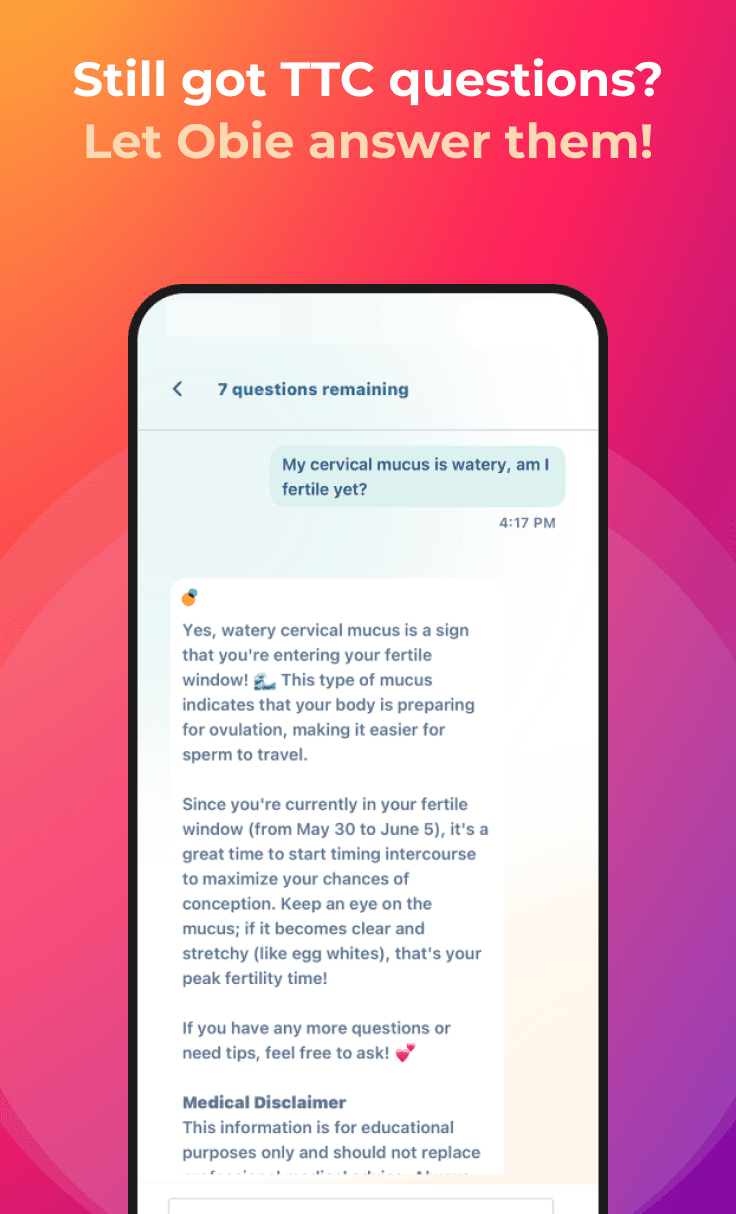1. Fertility Charting Chart, BBT charting, Ovulation calendar
Fertility Charting
Obie Editorial Team
Introduction to Fertility Charting
By charting your basal body temperature (BBT) you too can become one of these couples and increase your chances of getting pregnant earlier. Learning about your fertility through a BBT chart is a very exciting way to get pregnant. It makes you understand your body and often gives trying to conceive (TTC) more of a purpose.
The basal body temperature or "BBT" is the temperature of your body at rest. For fertility charting, it's always taken in the morning before you move or get out of bed and after at least 3-4 hours of consecutive sleep. When the ovary releases an egg, it also releases the warmth-inducing hormone progesterone. That influx of progesterone typically makes body temperatures rise by well over two-tenths of a degree Fahrenheit within one to two days after ovulation. This elevated BBT remains until the next menstrual period and the resulting chart is called "biphasic" lower before and higher after ovulation.
So there is a certain lower temperature pattern before ovulation (usually below 98 degrees Fahrenheit), and an elevated temperature pattern after ovulation (usually above 98 degrees Fahrenheit). This ovulation pattern is called a biphasic curve.
Biphasic means two phases. The first phase, the phase before ovulation, is known as the proliferative or follicular phase, the phase when the egg matures and develops. The second phase, the phase after ovulation or the postovulatory phase, consists of relatively elevated temperatures when compared with the first phase. That second phase is also known as the secretory or luteal or corpus luteum phase.
Your goal in charting is to find the typical biphasic pattern in the daily plotting of temperatures.
"Ah, I get it," you say. "'Bi' means two — two phases. Lower temps before the big 'O' and higher temps after." Exactly! The actual temperatures are not important; they are different from woman to woman. What is important is to check for the pattern of elevated temps that stay up for at least three or more days.
Next Steps:








